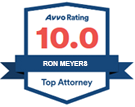When you’re involved in a car accident, determining fault is a critical step in securing compensation for your injuries and damages. But what happens if both drivers share some of the blame? In Washington, the concept of comparative negligence plays a significant role in how compensation is determined and distributed. Understanding this legal principle is essential for anyone navigating a car accident claim in the state.
In this blog, we’ll explain how Washington’s comparative negligence system works, how fault is determined, and what it means for your car accident claim. By understanding this important legal concept, you’ll be better equipped to protect your rights and ensure you receive the compensation you deserve.
What Is Comparative Negligence?
Comparative negligence is a legal doctrine used to allocate fault among parties involved in an accident. It recognizes that more than one party can be at fault for an accident and adjusts the compensation accordingly.
Washington State follows a system known as pure comparative negligence. This means that even if you are partially at fault for the accident, you can still recover damages. However, your compensation will be reduced by your percentage of fault.
This system contrasts with contributory negligence, used in a few other states, where if you are even 1% at fault, you may be barred from recovering any damages. It also differs from modified comparative negligence, where you can only recover damages if you are less than 50% (or sometimes 51%) at fault.
How Comparative Negligence Works in Washington State
In Washington, the process of determining fault and applying comparative negligence principles is crucial to how much compensation each party can receive.
Basic Principle
Under Washington’s pure comparative negligence rule, each party involved in the accident is assigned a percentage of fault. This percentage directly reduces the amount of compensation they can recover.
Let’s consider a scenario: You are involved in a car accident where the total damages amount to $50,000. If it is determined that you were 30% at fault and the other driver was 70% at fault, you would be entitled to 70% of the total damages—$35,000.
Examples of Fault Scenarios
- Scenario 1: You were speeding when another driver ran a red light and collided with your vehicle. If you’re found to be 20% at fault for speeding, and the other driver 80% at fault for running the red light, your compensation would be reduced by 20%.
- Scenario 2: Both you and the other driver were distracted—one texting and the other adjusting the radio—leading to a collision. If it’s determined that you were 50% at fault, you could still recover 50% of your damages.
Determining Fault in a Car Accident
Determining fault in a car accident involves analyzing various factors, such as traffic laws, witness statements, and physical evidence. Here’s how the process typically works:
Factors Considered in Fault Determination
- Traffic Laws: Violations of traffic laws, such as speeding, failing to yield, or running a stop sign, are strong indicators of fault.
- Witness Statements: Witnesses can provide an objective account of the accident, helping to clarify what happened.
- Physical Evidence: Vehicle damage, skid marks, and road conditions can provide clues about how the accident occurred and who was at fault.
Role of Insurance Companies and Courts
- Insurance Companies: After an accident, insurance adjusters will review the evidence and assign fault percentages. These determinations are often negotiable, especially if you believe the assigned fault does not accurately reflect what happened.
- Courts: If a settlement cannot be reached, the case may go to court. A judge or jury will then decide on the fault percentages based on the evidence presented.
Gathering strong evidence to support your version of events is crucial in minimizing your fault percentage and maximizing your compensation.
The Impact of Comparative Negligence on Your Compensation
Your compensation in a car accident claim is directly affected by your percentage of fault. Understanding how this works can help you make informed decisions about your case.
How Fault Affects Compensation
If you are partially at fault for the accident, your compensation will be reduced in proportion to your fault. For example, if you have $20,000 in damages and are found to be 25% at fault, you would receive $15,000 after the 25% reduction.
Recovering Damages Even If Partially at Fault
One of the advantages of Washington’s pure comparative negligence system is that you can still recover damages even if you are mostly at fault. For instance, if you are 90% at fault, you can still recover 10% of your damages. This is a significant protection compared to other states with stricter negligence laws.
Maximizing Your Compensation
To maximize your compensation, it’s essential to minimize your fault percentage. This is where gathering solid evidence and working with an experienced attorney can make a significant difference. An attorney can help ensure that fault is accurately assessed, potentially reducing your liability and increasing your recovery.
Common Misconceptions About Comparative Negligence
There are several misconceptions about comparative negligence that can lead to confusion or incorrect assumptions about your rights in a car accident case.
Misconception 1: If You’re Partially at Fault, You Can’t Recover Anything
Many people mistakenly believe that if they’re partially at fault, they cannot recover any damages. In Washington, this is not true. Even if you bear some responsibility for the accident, you can still recover damages, though the amount will be reduced by your percentage of fault.
Misconception 2: You Can’t Recover Damages If You’re More Than 50% at Fault
Unlike some states with modified comparative negligence rules, Washington allows you to recover damages regardless of your level of fault. This means even if you’re more than 50% at fault, you can still receive compensation for your injuries and damages.
How an Attorney Can Help in Comparative Negligence Cases
Navigating a car accident claim under Washington’s comparative negligence system can be complex, especially when fault is disputed. An experienced attorney can be invaluable in these situations.
Determining and Arguing Fault
An attorney will thoroughly investigate the accident, gather evidence, and work to minimize your fault percentage. They can also challenge the fault determination made by insurance companies, advocating for a fair assessment that reflects the true circumstances of the accident.
Gathering Evidence
Your attorney will help collect critical evidence, such as witness statements, police reports, and expert testimony, to build a strong case. They will also handle negotiations with insurance companies to ensure that your rights are protected and that you receive the compensation you deserve.
Why Choose Ron Meyers and Associates
At Ron Meyers and Associates, we have extensive experience handling car accident cases involving comparative negligence. Our team is dedicated to helping clients in Olympia and throughout Western Washington navigate the complexities of their claims and fight for fair compensation.
We understand the nuances of Washington’s comparative negligence laws and how to build a strong case that maximizes your recovery. Our compassionate approach ensures that you receive the support and guidance you need during this challenging time.
Take Action Today
Understanding comparative negligence is crucial for anyone involved in a car accident in Washington. If you or a loved one has been in an accident where fault is disputed, it’s important to seek legal advice as soon as possible. Early action can help preserve evidence and ensure that your rights are protected.
Contact Ron Meyers and Associates today for a free consultation. Let us help you navigate your car accident claim and work towards securing the compensation you deserve.





